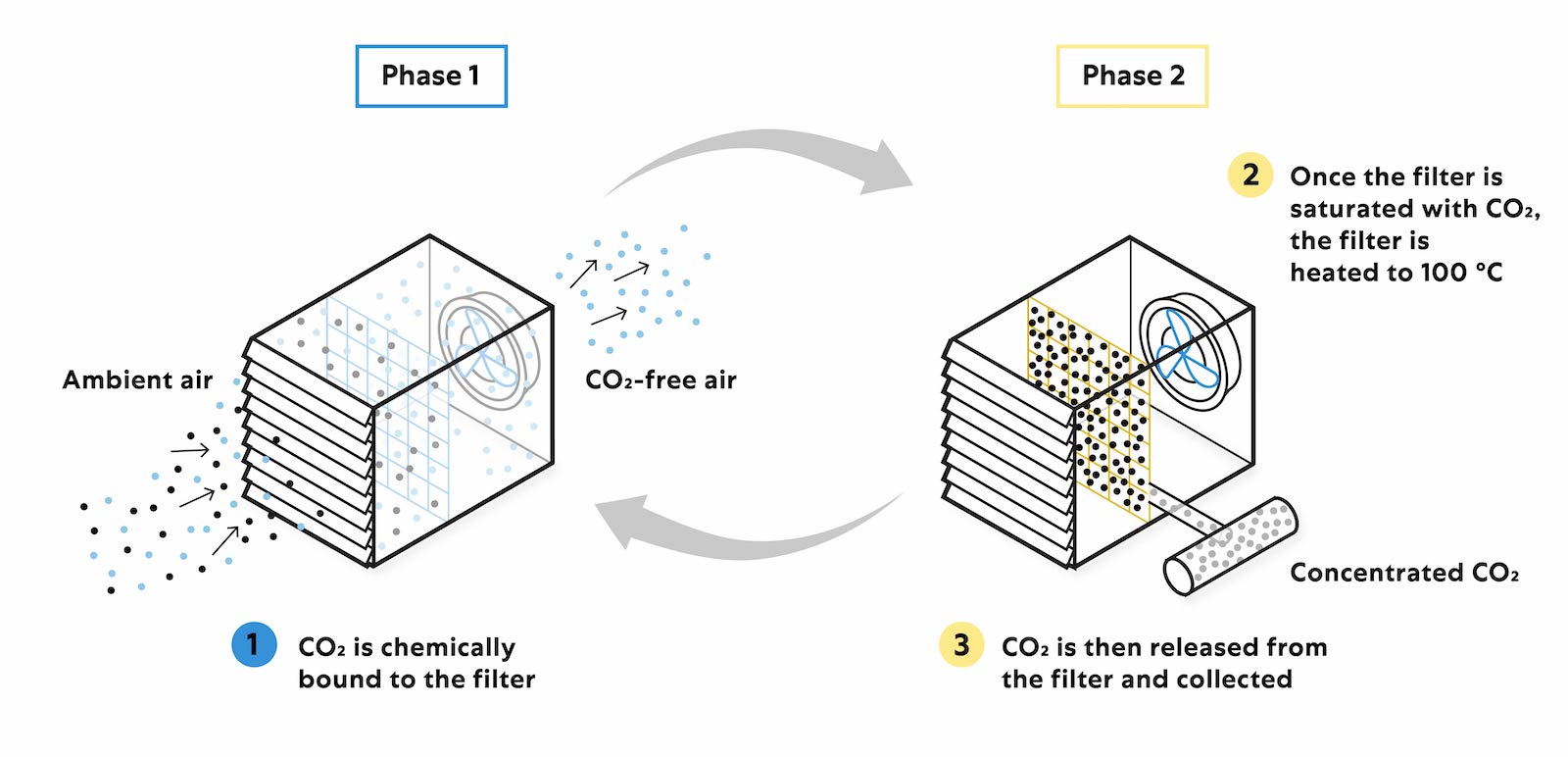Image via Climeworks
In recent years, carbon capture and storage has become a major discussion point in climate change conversations. As countries try to pencil out the necessary actions to reach carbon neutrality, the ability to remove and store carbon dioxide from the atmosphere is presented as a complementary solution to increasing the use of non-carbon producing energy sources and improving overall energy efficiency. But what is it and how does it work?
Let’s walk through the key details to understanding this new and somewhat controversial method.
WHAT PRODUCES CARBON DIOXIDE AND WHY IS IT TROUBLESOME?
Carbon dioxide is the most commonly produced greenhouse gas. According to the Center for Climate and Energy Solutions, carbon dioxide accounts for 76 percent of global emissions. Respiration and plant decomposition are examples of natural CO2 emissions, whereas combustion engines and power plants create human-generated forms of CO2. It is this second category that we need to worry about. As large amounts of CO2 are released into the atmosphere, it produces a warming effect, which over time accounts for the temperature increases we have witnessed globally.
WHAT IS CARBON CAPTURE AND STORAGE?
Carbon capture and storage is the process of capturing and storing carbon dioxide. This can either be biological, as occurs in the ocean and through plants, or through technology developed to either remove CO2 from the atmosphere or directly from a pollution generating source, such as a natural gas or coal plant.
Oceans and plants are both natural carbon dioxide sinks, meaning they absorb more carbon than they emit. In fact, 25 percent of human-emitted CO2 is absorbed by our oceans, and colder, nutrient-rich parts of the ocean are capable of absorbing even more. But human industrialization is changing this. Emissions have caused the oceans to warm and increased the deforestation of many parts of the planet. The outcome is more CO2 in the atmosphere and the elimination of natural sources of sequestration.
TECHNOLOGY ON THE HORIZON
Geological carbon capture has emerged as a promising technology to sequester emissions. Carbon dioxide is captured, pressurized so it becomes liquid in form, and injected into porous rock formations for long-term storage below the ground. Swiss start-up Climeworks AG, has partnered with Icelandic carbon storage firm, Carbfix, to develop the largest carbon capture and storage plant in the world. The facility, located in Iceland, has the ability to sequester up to 4,000 tons of CO2 per year.
As technologies advance, researchers are looking for ways to not only remove carbon from the atmosphere, but also use it as a resource. One example includes using carbon dioxide as a raw input in graphene production, a material found in most smart screens.

Graphic via Climeworks
WHY ARE WE BEGINNING TO HEAR MORE ABOUT CARBON CAPTURE AND STORAGE?
For the past several decades, climate strategies have focused on increasing the use of non-carbon producing energy sources and improving the overall energy efficiency of CO2 producing industries and technologies, but carbon capture is becoming an increasingly important complementary strategy to account for where humans will continue to produce carbon dioxide.
Carbon capture could also help speed up progress toward many climate change mitigation targets. The Paris Agreement and 2018 IPCC Special Report on Global Warming of 1.5°C have prompted greater pressure and ambition amongst policymakers and business executives to achieve carbon neutrality. In order to reach these goals and commitments, researchers suggest significant actions need to be taken in the next 30 years. Bringing in carbon capture and storage could help expedite progress toward targets as alternative technologies and new behaviors evolve.
CRITICISM
Many climate change advocates, researchers, and strategists argue that carbon capture and storage alone is not a viable solution to mitigating the climate crisis. While the technologies have been in existence since the 1970s, they have not been scaled due to their high costs. Critics also argue that they do not fix our consumptive behavior, as they encourage the continued use of inefficient, carbon dioxide-producing technologies rather than conversions to cleaner methods.
THE FUTURE OF SEQUESTRATION
Despite the criticism and cost, carbon capture and storage is not going away. Tech giant Microsoft is actively contributing research towards enabling it as a viable and cost-efficient technique for decarbonization. In 2021, the U.S. Department of Energy released $45 million in funding for 12 projects to advance technologies that could capture and store at least 95% of CO2 emissions generated from natural gas power and select industrial facilities. As projects like these get underway and more facilities are set up around the world, we will likely have a clearer picture of carbon capture and storage’s future and impact on climate change mitigation.
